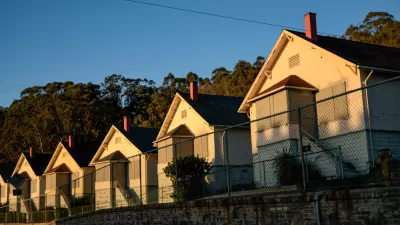Owning a home with no one living in it could soon come with a penalty in Toronto.

"[The Toronto City] Council could impose a one per cent tax on vacant homes at the start of next year as a way to help ease the city’s affordable housing crisis and raise revenue during a looming economic recovery from COVID-19," according to an article by Jennifer Pagliaro.
"Residential property owners would be required to make a declaration each year by the deadline and could be subject to a city audit to verify whether the home is vacant or not," reports Pagliaro.
The city expects a one percent tax to generate between $55 million to $66 million (all figures Canadian dollars) a year, but the main goal of the tax is to reduce the number of vacant properties, contributing to the affordability of the housing stock around the city. The expected revenue figures are modeled on the example of Vancouver, which approved a similar vacancy tax in 2016.
FULL STORY: Toronto vacant home tax of one per cent could be in place at the start of next year, says city staff

Trump Administration Could Effectively End Housing Voucher Program
Federal officials are eyeing major cuts to the Section 8 program that helps millions of low-income households pay rent.

Planetizen Federal Action Tracker
A weekly monitor of how Trump’s orders and actions are impacting planners and planning in America.

The 120 Year Old Tiny Home Villages That Sheltered San Francisco’s Earthquake Refugees
More than a century ago, San Francisco mobilized to house thousands of residents displaced by the 1906 earthquake. Could their strategy offer a model for the present?

HSR Reaches Key Settlement in Northern California City
The state’s high-speed rail authority reached an agreement with Millbrae, a key city on the train’s proposed route to San Francisco.

Washington State Legislature Passes Parking Reform Bill
A bill that would limit parking requirements for new developments is headed to the governor’s desk.

Missouri Law Would Ban Protections for Housing Voucher Users
A state law seeks to overturn source-of-income discrimination bans passed by several Missouri cities.
Urban Design for Planners 1: Software Tools
This six-course series explores essential urban design concepts using open source software and equips planners with the tools they need to participate fully in the urban design process.
Planning for Universal Design
Learn the tools for implementing Universal Design in planning regulations.
Ada County Highway District
Clanton & Associates, Inc.
Jessamine County Fiscal Court
Institute for Housing and Urban Development Studies (IHS)
City of Grandview
Harvard GSD Executive Education
Toledo-Lucas County Plan Commissions
Salt Lake City
NYU Wagner Graduate School of Public Service





























